Description
Information of Nikon Z6 III Mirrorless Camera (Body only)
Overview
The Z6III delivers incredible video performance that never compromises, with 6K/60p RAW, 5.4K/60p YUV and Full HD/240p for epic slow-motion. A high-performance build in both software and hardware; the robust and innovative full-frame mirrorless camera brings users the experience of superb autofocusing even in low lights, flexible custom Picture Controls, 120 fps shooting with Pre-Release Capture, as well as an array of video functions. Its class-leading EVF also offers impressive brightness and clarity with a spectacularly wide colour gamut.
24.5MP Partially-Stacked CMOS Sensor
EXPEED 7 Image Processor
- Top continuous shooting speeds of 20 fps when shooting in raw, up to 60 fps when shooting in full-frame JPEG, and 120 fps when shooting JPEGs using a DX crop, with all rates supporting full AF/AE performance.
- Able to buffer over 1000 images in a burst when using the electronic shutter, meaning image sequences can be recorded for approximately 50 seconds continuously.
- Pre-Release Capture at up to 120 fps helps make decisive moment shots easier by recording frames in a burst for up to a second prior to actually releasing the shutter. When this feature is activated, burst shooting will commence when the shutter is half-pressed and the buffer will retain up to 4 seconds’ worth of frames after fully pressing the shutter.
- Electronic shutter affords a top shutter speed of 1/16,000 sec for working in the brightest conditions with wider apertures.
- Partially-stacked sensor design reduces rolling shutter distortion so fast-moving subjects, like a golf club, tennis racket, or baseball bat, do not appear distorted when working with shutter speeds up to 1/16,000 sec.
- AF calculations are done at a 120 fps rate to keep up with fast continuous shooting speeds.
493-Point Phase-Detection AF
Subject Detection with Deep Learning Technology
Pixel Shift Technology
Eye-Detection AF, specifically, has been tuned for improved accuracy and refined recognition of eyes in the scene and can also be used in conjunction with custom Wide-Area AF for different subject shapes and sizes.
Internal 6K60 and 4K 120 Recording
Equally capable for video, the Z6 III approaches the Z9’s recording capabilities here, as well, with a variety of resolutions and frame rates available up to 6K.Using full pixel readout, 6K60p video can be recorded with continuous shooting, while 4K and Full HD recording is also possible in a variety of frame rates, including full-frame 4K recording at up to 120p and Full HD recording at 240p for slow-motion playback.
Nikon’s Brightest Viewfinder
170° Vari-Angle LCD
Body Design
- Dual card slots-one CFexpress Type B slot and one UHS-II SD slot-allow for flexible file saving. The CFx slot is suitable for data-intensive applications, like 6K recording and high-speed burst shooting, while the SD slot retains compatibility with the popular storage format. Additionally, the CFx B slot is also compatible with XQD memory cards.
- Pair the Z6 III with the optional MB-N14 Power Battery Pack grip for improved ergonomics when shooting vertical and up to 1.9x the battery life.
- The smaller, lighter design makes the Z6 III an ideal candidate for rigging or use on a gimbal for video use.
- Premium weather sealing protects against dust and moisture for confident use in harsh climates.
- In-body Vibration Reduction now supports Synchro VR to achieve up to 8 stops of camera shake compensation when used with select Z lenses.
Versatile Connectivity
Matching the professional build quality, the Z6 III is fitted with a variety of connectivity options to suit various workflow needs:
- Another Nikon first, the Z6 III features direct-to-cloud connectivity with Nikon Imaging Cloud for file transfer and access to Nikon’s imaging recipes for creative color grading
- Sync timecodes using Ultrasync Blue from Atmos, connecting multiple Z6 III camera bodies for multi-camera production setups
- Full-size HDMI port for outputting video to an external recorder or monitor
- 3.5mm headphone port and a new line-in port for on-board audio monitoring and high-quality audio input directly into the camera
- One USB-C port that supports file transfers and tethering as well as power delivery and battery charging
- USB-C communication terminal supports USB-LAN connectivity when paired with an optional USB-C to Ethernet adapter. This enables a 1000BASE-T wired LAN connection for transferring files over FTP
- 10-pin port offers wide accessories and remote connectivity
- Bluetooth and Wi-Fi (2.4 and 5 GHz) permit wireless transferring of files, remote camera control via a mobile device, and works in conjunction with the NX Mobile Air app for file management
Specifications
| Type | |
|---|---|
| Type | Digital camera with support for interchangeable lenses |
| Lens Mount | Nikon Z mount |
| Picture Angle | Full-frame / FX-Format |
| Image Sensor | |
| Sensor Size | 35.9 mm x 23.9 mm |
| Image Sensor Type | CMOS |
| Total Pixels | 26.79 million |
| Dust-Reduction System | Image sensor cleaning, Image Dust Off reference data (requires NX Studio) |
| Image Area (pixels) | [FX (36 x 24)] selected for image area: (L) 6048 x 4032 ( 24.4 million) (M) 4528 x 3024 ( 13.7 million) (S) 3024 x 2016 ( 6.1 million) [DX (24 x 16)] selected for image area: (L) 3984 x 2656 ( 10.6 million) (M) 2976 x 1992 ( 5.9 million) (S) 1984 x 1328 ( 2.6 million) [1:1 (24 x 24)] selected for image area: (L) 4032 x 4032 ( 16.3 million) (M) 3024 x 3024 ( 9.1 million) (S) 2016 x 2016 ( 4.1 million) [16:9 (36 x 20)] selected for image area: (L) 6048 x 3400 ( 20.6 million) (M) 4528 x 2544 ( 11.5 million) (S) 3024 x 1696 ( 5.1 million) |
| Effective Pixels (Megapixels) | 24.5 million |
| Image Sensor Format | Full-frame/FX-format |
| File System | |
| File Format Still Images | NEF (RAW): 14 bit; choose from lossless compression, high efficiency (high), and high efficiency options JPEG: JPEG-Baseline compliant with fine (approx. 1 : 4), normal (approx. 1 : 8), or basic (approx. 1 : 16) compression; size-priority and optimal-quality compression available HEIF: Supports fine (approx. 1 : 4), normal (approx. 1 : 8), or basic (approx. 1 : 16) compression; size-priority and optimal-quality compression available NEF (RAW)+JPEG: Single photograph recorded in both NEF (RAW) and JPEG formats NEF (RAW)+HEIF: Single photograph recorded in both NEF (RAW) and HEIF formats |
| Picture Control | Auto , Standard , Neutral , Vivid , Monochrome , Flat Monochrome , Deep Tone Monochrome , Portrait , Rich Tone Portrait , Landscape , Flat Creative Picture Controls (Dream, Morning, Pop, Sunday, Somber, Dramatic, Silence, Bleached, Melancholic, Pure, Denim, Toy, Sepia, Blue, Red, Pink, Charcoal, Graphite, Binary, Carbon); selected Picture Control can be modified; storage for Custom Picture Controls Note: Choice of Picture Controls is restricted to Standard, Monochrome, and Flat when HLG is selected for tone mode during still photography. |
| File System | DCF 2.0, Exif 2.32, MPEG‑A MIAF |
| Storage Media | CFexpress (Type B) , XQD , SD , SDHC (UHS-II compliant) , SDXC (UHS-II compliant) |
| Card Slot | 1 CFexpress card or XQD card and 1 Secure Digital (SD) card Either card can be used for overflow or backup storage, for separate storage of NEF (RAW) and JPEG or HEIF pictures, or for storage of duplicate JPEG or HEIF pictures at different sizes and image qualities; pictures can be copied between cards. |
| Viewfinder | |
| Viewfinder | 1.27-cm/0.5-in. approx. 5760k-dot UXGA OLED electronic viewfinder with color balance and auto and 19-level manual brightness controls; high frame-rate display available |
| Eye Sensor | Automatically switches between monitor and viewfinder displays |
| Lens Compatibility at a Glance*** | Z mount NIKKOR lenses F mount NIKKOR lenses (mount adapter required; restrictions may apply) |
| Viewfinder Diopter Adjustment | ‘-4 to +2 m-1 |
| Viewfinder Eyepoint | 21 mm (-1.0 m-1; from rearmost surface of viewfinder eyepiece lens) |
| Viewfinder Magnification | Approx. 0.8x (50 mm lens at infinity, -1.0 m-1) |
| Viewfinder Frame Coverage | Approx. 100% horizontal and 100% vertical |
| Shutter | |
| Shutter Type | Electronically-controlled vertical-travel focal-plane mechanical shutter; electronic front-curtain shutter; electronic shutter |
| Frame Advance Rate | ¹⁄₈₀₀₀ to 30 s (choose from step sizes of ¹⁄₃, ¹⁄₂, and 1 EV, extendable to 900 s in mode M), bulb, time When using an electronic shutter, the shutter speed can be set up to ¹⁄₁₆₀₀₀ s. |
| Shutter Release Modes | Single frame , continuous low-speed , continuous high-speed , continuous high-speed (extended) , high-speed frame capture + with Pre-Release Capture , Self-timer |
| Flash Sync Speed | Flash synchronizes with shutter at speeds of ¹⁄₂₀₀ s or slower; faster sync speeds are supported with auto FP high-speed sync When using an electronic shutter, flash synchronizes with the shutter at speeds of ¹⁄₆₀ s or slower; and auto FP high-speed sync cannot be used. |
| Continuous Shooting Options | Up to 120 fps Continuous low-speed: Approx. 1 to 7 fps Continuous high speed: Approx. 8.1 fps (when using the electronic shutter and image quality settings other than NEF (RAW) and NEF (RAW) +: approx. 16 fps) Continuous high speed (extended): Approx. 14 fps (with electronic shutter: Approx. 20 fps) High-speed frame capture + (C30): Approx. 30 fps High-speed frame capture + (C60): Approx. 60 fps High-speed frame capture + (C120): Approx. 120 fps Maximum frame advance rate as measured by in-house tests. |
| Self-timer | 2 s, 5 s, 10 s, 20 s; 1 to 9 exposures at intervals of 0.5, 1, 2, or 3 s |
| Exposure | |
| Exposure Metering | TTL metering using camera image sensor |
| Exposure Modes | AUTO: auto, P: programmed auto with flexible program, S: shutter-priority auto, A: aperture-priority auto, M: manual |
| Exposure Lock | Luminosity locked at detected value |
| Exposure Compensation | Range: -5 to +5 EV (choose from step sizes of 1/3 and 1/2 EV) |
| Metering Range | ‘-4 to +17 EV Figures are for ISO 100 equivalent and f/2.0 lens at 20 °C/68 °F |
| Metering Method | Matrix metering Center-weighted metering: Weight of 75% given to 12 or 8 mm circle in center of frame or weighting can be based on average of entire frame Spot metering: Meters circle with a diameter of approximately 4 mm centered on selected focus point Highlight-weighted metering |
| Multiple Exposure | Add, average, lighten, darken |
| Other Options | HDR overlay, photo mode flicker reduction, high-frequency flicker reduction |
| Sensitivity | |
| ISO Sensitivity | ISO 100 to 64000 (choose from step sizes of ¹⁄₃ and 1 EV); can also be set to approx. 0.3, 0.7, or 1 EV (ISO 50 equivalent) below ISO 100 or to approx. 0.3, 0.7, 1, or 1.7 EV (ISO 204800 equivalent) above ISO 64000; auto ISO sensitivity control available Note: ISO sensitivity is limited to 400 to 64000 when HLG is selected for tone mode. |
| Active D-Lighting | Auto, Extra high, High, Normal, Low, and Off |
| Highest Standard ISO Sensitivity | 64000 |
| Lowest Standard ISO Sensitivity | 100 |
| Focus / Autofocus | |
| Focus Point | 273 focus points (single-point AF), 299 focus points (auto-area AF); Number of focus points available in photo mode with FX selected for image area |
| AF-Area Mode | Pinpoint (available in photo mode only), single-point, dynamic-area (S, M, and L; available in photo mode only), wide-area (S, L, C1, and C2), and auto-area AF; 3D-tracking (available in photo mode only); subject-tracking AF (available in video mode only) |
| Lens Servo | Autofocus (AF): Single-servo AF (AF-S) , continuous-servo AF (AF-C) , full-time AF (AF-F; available only in video mode) ; predictive focus tracking Manual focus (M): Electronic rangefinder can be used |
| VR (Vibration Reduction) Image Stabilization | 5-axis image sensor shift |
| Detection Range | ‘-10 to +19 EV Measured in photo mode at ISO 100 equivalent and a temperature of 20 °C/68 °F using single-servo AF (AF‑S) and a lens with a maximum aperture of f/1.2 |
| Autofocus System | Hybrid phase-detection/contrast AF with AF assist |
| Flash | |
| Flash Compensation | ‘-3 to +1 EV (choose from step sizes of ¹⁄₃ and ¹⁄₂ EV) |
| Flash-ready Indicator | Lights when optional flash unit is fully charged; flashes as underexposure warning after flash is fired at full output |
| Accessory Shoe | ISO 518 hot-shoe with sync and data contacts and safety lock |
| Flash Control | TTL: i‑TTL flash control; i‑TTL balanced fill-flash is used with matrix, center-weighted, and highlight-weighted metering, standard i‑TTL fill-flash with spot metering |
| Flash Sync Modes | Front-curtain sync, slow sync, rear-curtain sync, red-eye reduction, red-eye reduction with slow sync, off |
| Nikon Creative Lighting System (CLS) | i-TTL flash control, radio-controlled Advanced Wireless Lighting, optical Advanced Wireless Lighting, modeling illumination, FV lock, Color Information Communication, auto FP high-speed sync, unified flash control |
| White Balance | |
| White Balance | Auto (3 types), natural light auto, direct sunlight, cloudy, shade, incandescent, fluorescent (3 types), flash, choose color temperature (2500 to 10,000 K), preset manual (up to 6 values can be stored), all with fine-tuning |
| White Balance Bracketing | Yes. Exposure and/or flash, white balance, ADL |
| Movie | |
| Movie | 5376 x 3024 (5.4K): 60p/50p/30p/25p/24p 3840 x 2160 (4K UHD): 120p/100p/60p/50p/30p/25p/24p 1920 x 1080: 240p/200p/120p/100p/60p/50p/30p/25p/24p 1920 x 1080 (slow-motion): 30p x4/25p x4/24p x5 Note: Actual frame rates for 240p, 200p, 120p, 100p, 60p, 50p, 30p, 25p, and 24p are 239.76, 200, 119.88, 100, 59.94, 50, 29.97, 25, and 23.976 fps respectively. RAW Video: 6048 x 3402: 60p/50p/30p/25p/24p 4032 x 2268: 60p/50p/30p/25p/24p 3984 x 2240: 120p/100p/60p/50p/30p/25p/24p Note: Actual frame rates for 120p, 100p, 60p, 50p, 30p, 25p, and 24p are 119.88, 100, 59.94, 50, 29.97, 25, and 23.976 fps respectively. |
| Movie Metering | TTL metering using camera image sensor |
| Time-Lapse Movie | Yes |
| Movie Active D-Lighting | Extra high, High, Normal, Low, and Off |
| Movie ISO | Mode M: Manual selection (ISO 64 to 25600; choose from step sizes of 1/6, 1/3 and 1 EV); with additional options available equivalent to approximately 0.3, 0.7, 1, or 2 EV (ISO 102400 equivalent) above ISO 25600; auto ISO sensitivity control (ISO 64 to Hi 2.0) available with selectable upper limit Modes P, S, A: Auto ISO sensitivity control (ISO 64 to Hi 2.0) with selectable upper limit Note: ISO sensitivity is limited to 400 to 25600 when HLG is selected for tone mode. |
| Movie Audio | Built-in stereo or external microphone can be used; external audio devices can be used via line input, audio input sensitivity adjustable; attenuator, frequency response, and wind noise reduction functions |
| Movie Audio Recording Format | Linear PCM (48 KHz, 24 bit, for videos recorded in NEV or MOV format) , AAC (48 KHz, 16 bit, for videos recorded in MP4 format) |
| Movie Video Compression | N-RAW (12 bit) , Apple ProRes RAW HQ (12 bit) , Apple ProRes 422 HQ (10 bit) , H.265/HEVC (8 bit/10 bit) , H.264/AVC (8 bit) |
| Movie File Format | NEV, MOV, MP4 |
| Other options for video recording | Time-lapse video recording, electronic vibration reduction, time codes, N-Log and HDR (HLG) video, wave-form display, red REC frame indicator, video recording display zoom (50%, 100%, and 200%), extended shutter speeds (modes S and M), and dual-format (proxy-video) recording for RAW video; option to view video recording info available via i menu; Hi-Res Zoom |
| Monitor | |
| Monitor Size | 8 -cm ( 3.2 –in.) diagonal |
| Monitor Resolution | Approx. 2100 k-dot |
| Monitor Type | Vari-angle TFT touch-sensitive LCD with 170° viewing angle, approximately 100% frame coverage, and color balance and 15-level manual brightness controls |
| Playback | |
| Playback Functions | Full-frame and thumbnail (up to 4, 9, or 72 pictures) playback with playback zoom, playback zoom cropping, video playback, slide shows, histogram display, highlights, photo information, location data display, auto picture rotation, picture rating, voice memo recording and playback, IPTC information embedding and display, filtered playback, skip to first shot in series, series playback, save consecutive frames, and motion blend |
| Interface | |
| Interface | Type C SuperSpeed USB connector; connection to built-in USB ports is recommended |
| Wi-Fi Functionality | Standards: IEEE 802.11b/g/n/a/ac (Europe, Africa, the Middle East, Asia, Oceania, U.S.A., Canada, and Mexico) IEEE 802.11b/g/n/a (The Americas, other than U.S.A., Canada, and Mexico) Operating frequency: Europe (other than Ukraine), Israel, Turkey and India: 2412 to 2472 MHz (channel 13) and 5180 to 5825 MHz (5180 to 5700 MHz and 5745 to 5825 MHz) Algeria, Egypt, Morocco, the Republic of Congo, and Ukraine: 2412 to 2462 MHz (channel 11) and 5180 to 5320 MHz Africa (other than Algeria, Egypt, Morocco, and the Republic of Congo), Asia (other than Turkey), and the Middle East (other than Israel): 2412 to 2462 MHz (channel 11) and 5745 to 5805 MHz U.S.A., Canada, Mexico, Australia, New Zealand, the Republic of Fiji, and Papua New Guinea: 2412 to 2462 MHz (channel 11) and 5180 to 5825 MHz (5180 to 5580 MHz, 5660 to 5700 MHz, and 5745 to 5825 MHz) Other countries in the Americas: 2412 to 2462 MHz (channel 11) and 5180 to 5805 MHz (5180 to 5320 MHz and 5745 to 5805 MHz) Maximum output power (EIRP): 2.4 GHz band: 3.8 dBm 5 GHz band: 9.5 dBm Authentication: Open system, WPA2-PSK, WPA3-SAE |
| Menus | |
| Supported Languages | English The languages available vary with the country or region in which the camera was originally purchased |
| Power | |
| Battery / Batteries | One EN‑EL15c rechargeable Li-ion battery* *EN‑EL15b and EN‑EL15a batteries can be used in place of the EN‑EL15c. Note, however, that fewer pictures can be taken on a single charge than with the EN‑EL15c. EH-8P AC adapters can be used to charge EN‑EL15c and EN‑EL15b batteries only. |
| AC Adapter | EH-8P AC adapters (available separately); supplied UC‑E25 USB cable required EH‑5d, EH‑5c, and EH‑5b AC adapters; requires EP‑5B power connector (available separately) |
| Battery Pack | MB-N14 power battery packs (available separately) taking two EN‑EL15c* batteries *EN‑EL15b and EN‑EL15a batteries can be used in place of the EN‑EL15c. Note, however, that fewer pictures can be taken on a single charge than with the EN‑EL15c. |
| Miscellaneous | |
| Weight (g) (body only)*1 | Approx. 760 g ( 1 lb. 10.9 oz. ) with battery and memory card but without body cap and accessory shoe cover; approx. 670 g/1 lb. 7.7 oz. (camera body only) |
| Length x height x width (mm) (body only)* | Approx. 138.5 x 101.5 x 74 mm ( 5.5 x 4 x 3 in.) |
| Tripod Socket | 0.635 cm (¹⁄₄ in., ISO 1222) |
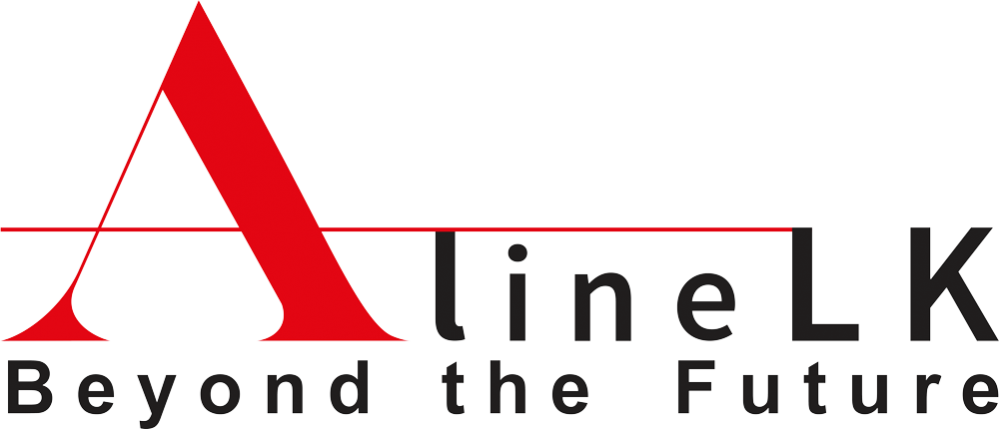

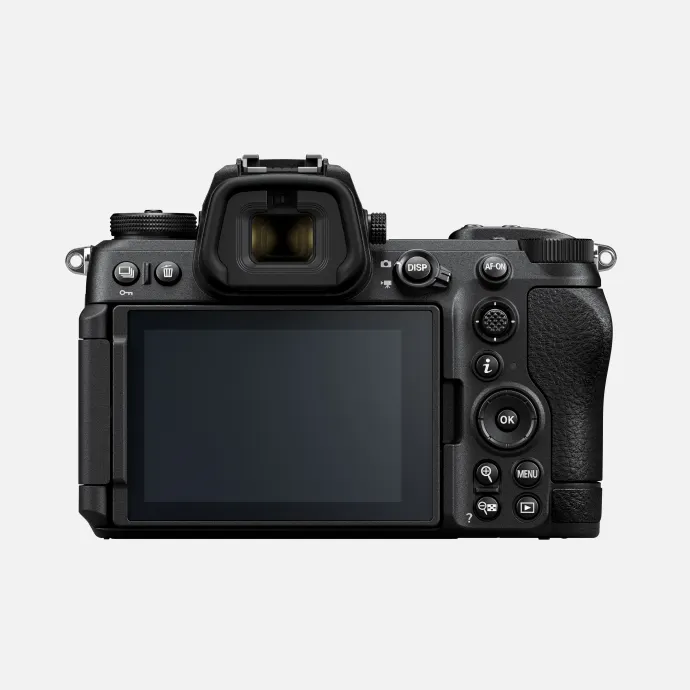


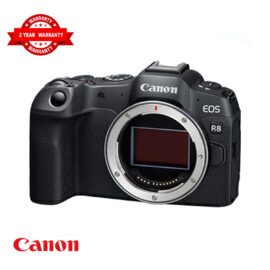
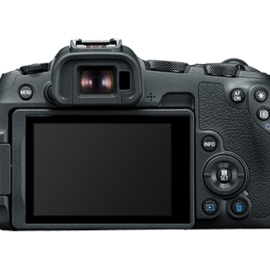
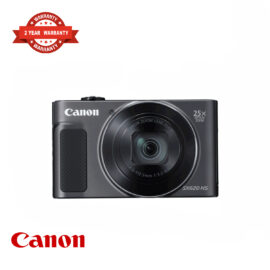
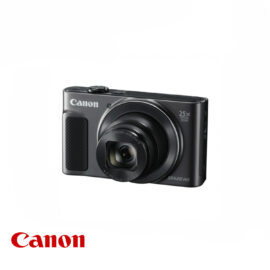
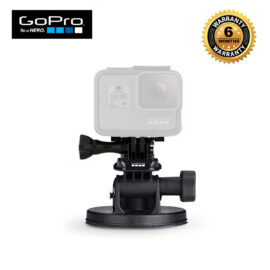
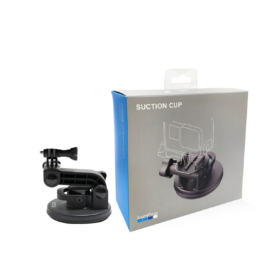
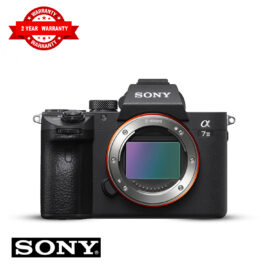
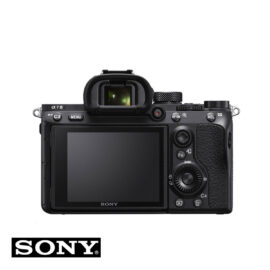
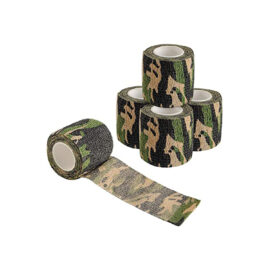
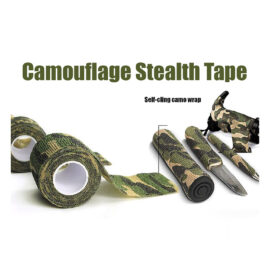
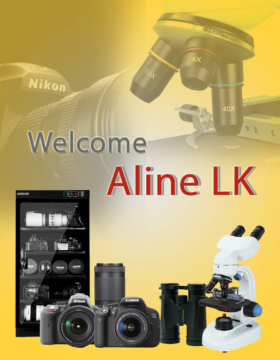
Reviews
There are no reviews yet.